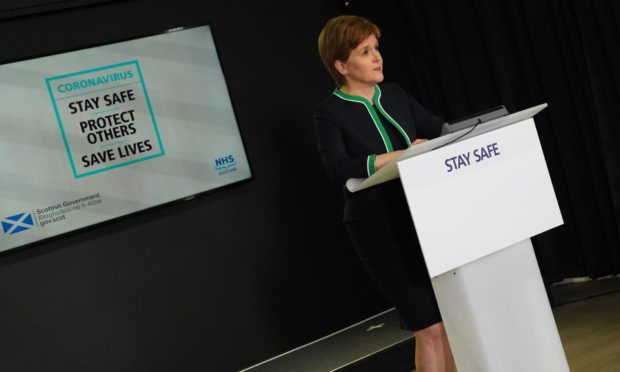Here’s one of the trickiest – and most urgent – questions of our time.
How does a government persuade people to behave in ways that promote the common good?
Indeed, the flouting of government guidance on social distancing rules at an Aberdeen hostelry has made Nicola Sturgeon want to cry.
The first minister made her comments after seeing pictures of a large queue outside the Soul bar.
It’s hardly surprising that she should be nearly reduced to tears following a spike in cases – let’s remind ourselves that we are literally talking about matters of life and death.
“I’ve seen pictures on social media over this week that, not to put too fine a point on it, made me want to cry,” she said at a coronavirus briefing.
Asked about the possibility of more restrictions being put back in place in the hospitality industry, she said it was “delicate balancing”.
It wasn’t something she wanted to do but further restriction would have to be considered.
I can understand the first minister’s caution – there is an understandable desire not to be criminalising people in the current volatile situation.
But what is the point at which stronger action needs to be taken for the public good? How many more deaths does it take for stricter lines to be drawn? 10? 15? 30?
I’m not raising this issue because I know the answer to the dilemma, but because I don’t know.
There does need to be further discussion about the issue, though. The virus clearly isn’t going away, nor should the debate.
The sightings of crowded beaches with not even token attempts at social distancing, or of public parks with bins overflowing with litter and other noxious substances, puts a question mark at least against the insistence that Scotland is handling this well.
But let me go back to the original question at the top of this column – how does a government persuade people to behave in ways that promote the common good?
This raises wide and uncomfortable questions about the human condition. Are we humans basically good, with a small percentage of “bad apples”, or do we primarily have base instincts with the odd flash of public spiritedness?
During lockdown, I have certainly seen or heard of examples of pretty reprehensible behaviour, and also of heroic goodness.
To help me, I want to pull Professor Richard Dawkins into this conversation.
In a recent interview with The Times newspaper, the well-known anti-religion campaigner said he feared the removal of religion would be a bad idea for society because it would give people “licence to do really bad things”.
It’s worth reading that sentence again.
“People may feel free to do bad things because they feel God is no longer watching them,” he went on.
“Whether irrational or not, it does, unfortunately, seem plausible that, if somebody sincerely believes God is watching his every move, he might be more likely to be good.
“I must say I hate that idea,” he added. “I want to believe that humans are better than that. I’d like to believe I’m honest whether anyone is watching or not.”
Although Dawkins said he doesn’t think the “Great Spy Camera theory” is “a good reason” for him to believe in God, he acknowledged that a society that affirms God’s existence can be effective in “keeping the crime rate down”.
I fear that Prof Dawkins, like Nicola Sturgeon, is close to tears at this point.
So where are we now? At what point should the law-enforcement whip come out, and serious sanctions be invoked? After how many deaths?
Now, you would be entitled to ask, what do I think should happen?
I’m confused. But I think Dawkins has a point. What am I saying? Now, where’s my handkerchief?










